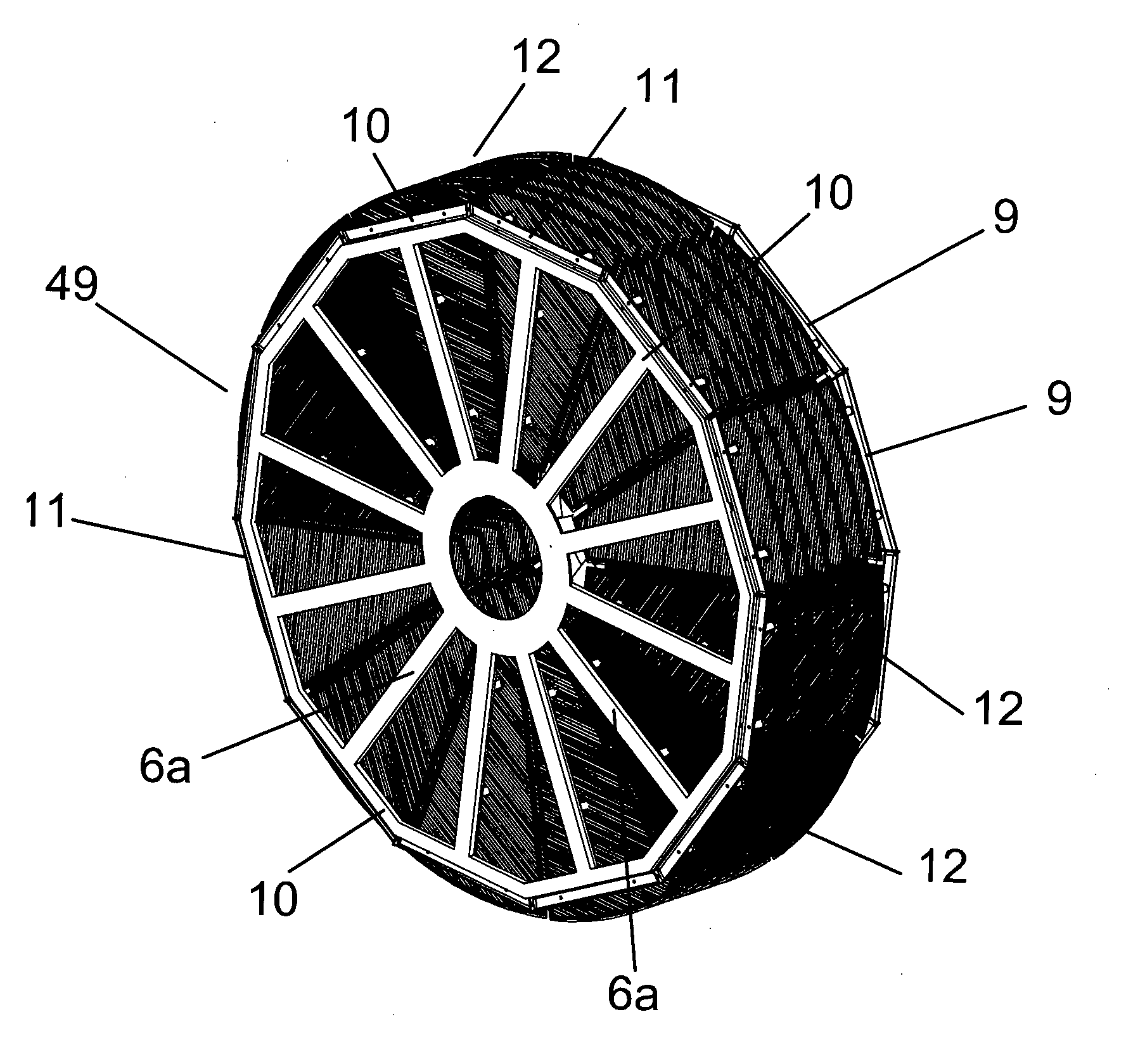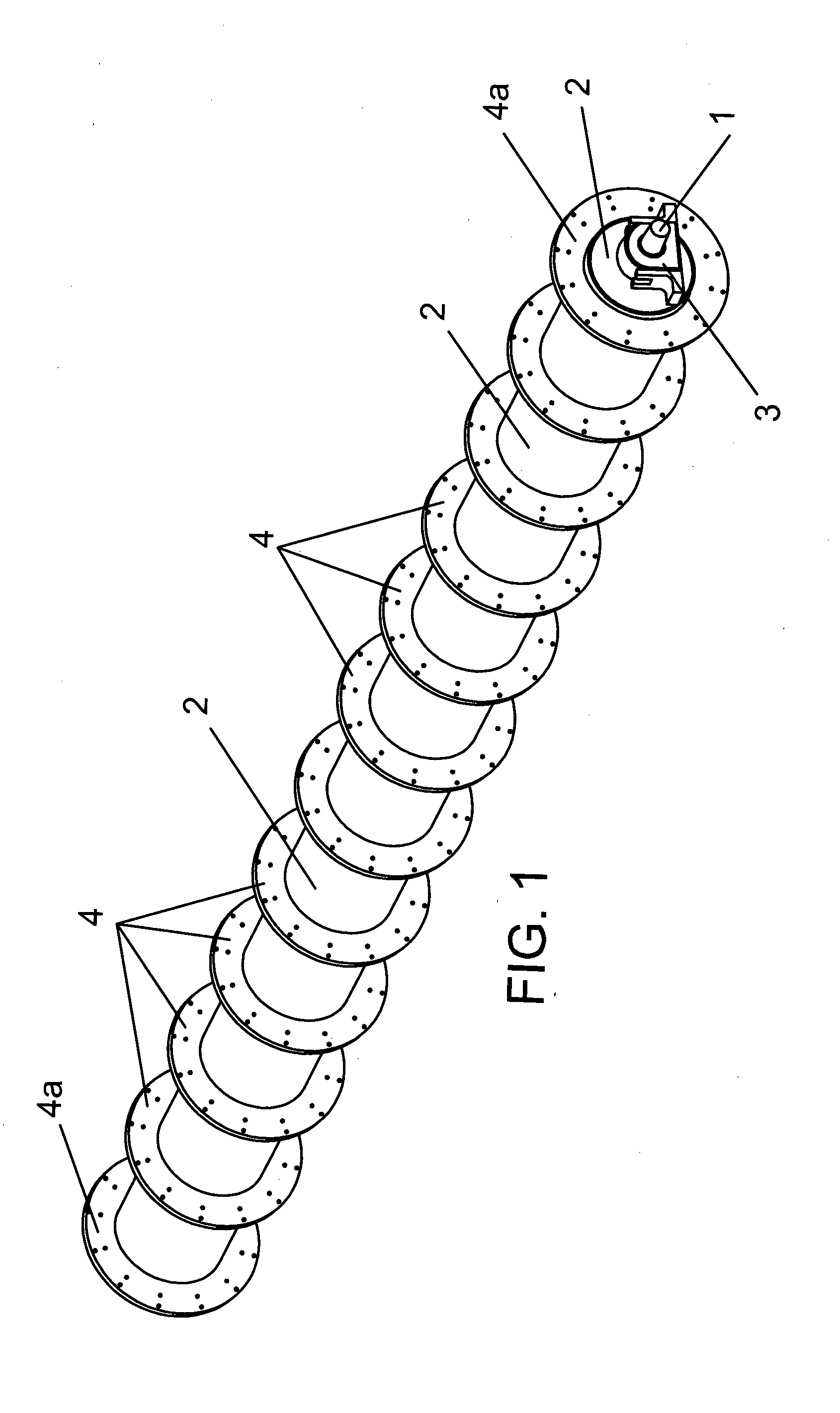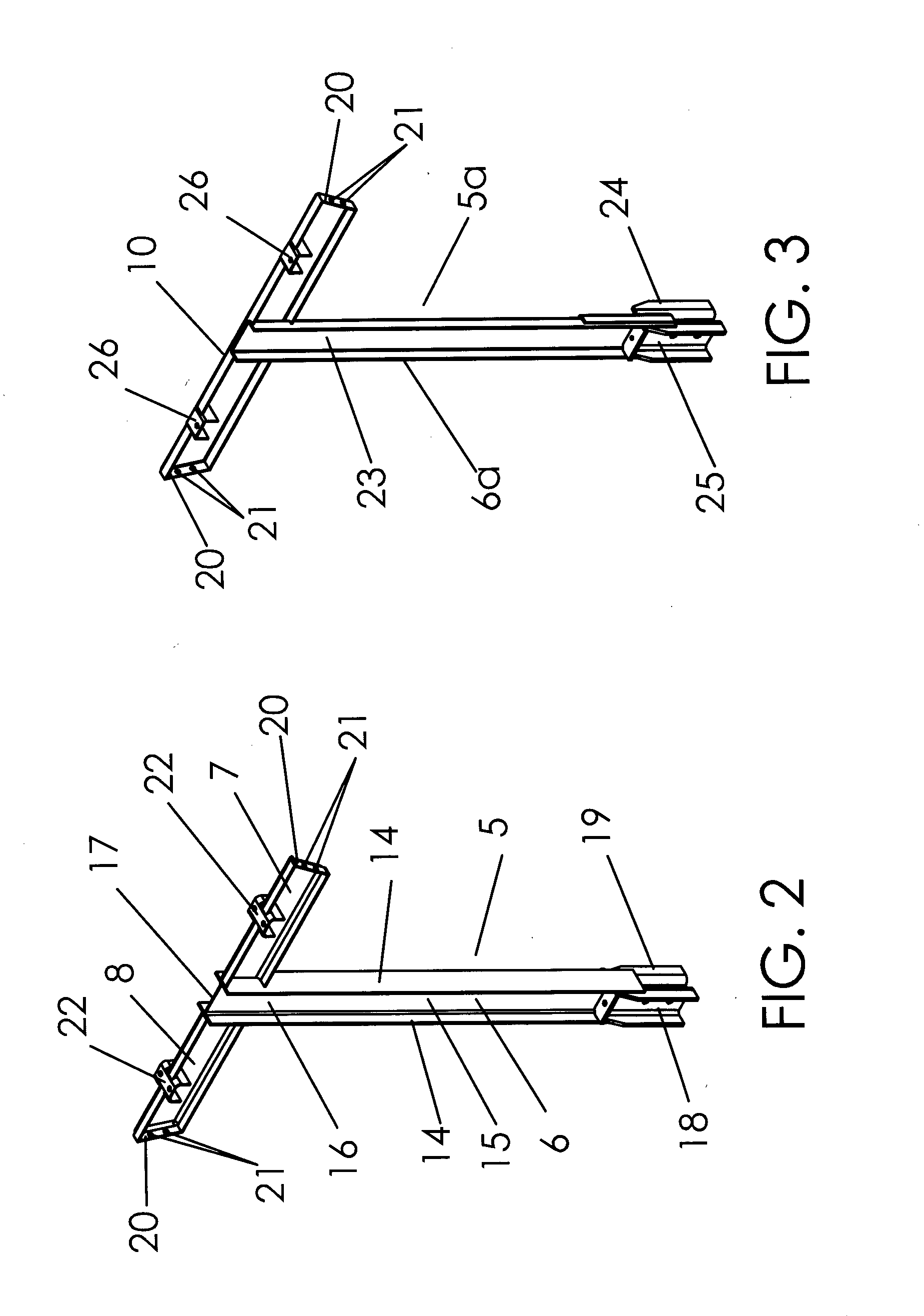High-capacity biological contact rotor
- Summary
- Abstract
- Description
- Claims
- Application Information
AI Technical Summary
Benefits of technology
Problems solved by technology
Method used
Image
Examples
Embodiment Construction
[0100]The characteristic details of the high capacity biological contact rotor for wastewater treatment are clearly shown in the following description and in the appended illustrative drawings, serving the same reference signs to indicate the same parts.
[0101]Referring to FIG. 1, the rotor is composed of a drive shaft 1 which is housed in a cylindrical tube 2 of great diameter, with a coating to prevent corrosion and with supports at the ends 3 for its placement in the wastewaters treatment tank and for its coupling to a drive motor (not shown); said cylindrical tube 2 comprises a plurality of intermediate annular collars 4, equidistantly distributed each other along its longitudinal section and two border annular collars a the ends 4a, adapted each annular collar to receive fixedly a plurality of radially distributed structural arms (see FIGS. 2 to 4); using fixation means (not shown) that are passed through holes made in said collars for fix radially, said structural arms.
[0102]Ac...
PUM
| Property | Measurement | Unit |
|---|---|---|
| Angle | aaaaa | aaaaa |
| Angle | aaaaa | aaaaa |
| Length | aaaaa | aaaaa |
Abstract
Description
Claims
Application Information
 Login to View More
Login to View More - R&D
- Intellectual Property
- Life Sciences
- Materials
- Tech Scout
- Unparalleled Data Quality
- Higher Quality Content
- 60% Fewer Hallucinations
Browse by: Latest US Patents, China's latest patents, Technical Efficacy Thesaurus, Application Domain, Technology Topic, Popular Technical Reports.
© 2025 PatSnap. All rights reserved.Legal|Privacy policy|Modern Slavery Act Transparency Statement|Sitemap|About US| Contact US: help@patsnap.com



